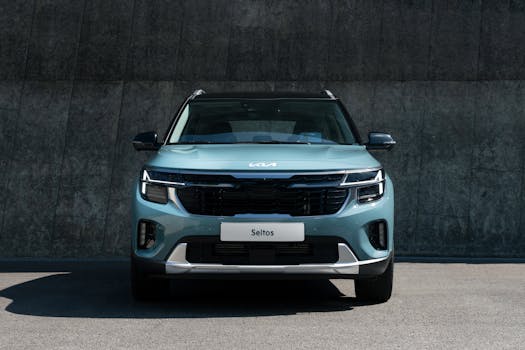
**
Tesla's arrival in the mainstream electric vehicle (EV) market has been nothing short of revolutionary. However, while Elon Musk’s company generates considerable buzz with announcements like the much-anticipated Cybertruck and futuristic designs, a quiet contender is making significant inroads: Kia. This article delves into the fascinating juxtaposition of Tesla’s brand power and Kia’s strategic approach, examining which automaker might ultimately drive home the most sales in the fiercely competitive EV landscape.
Tesla's Electrifying Presence: Hype vs. Reality
Tesla, synonymous with electric vehicles, has successfully cultivated a dedicated following built on innovation and cutting-edge technology. Their Model 3, Model Y, Model S, and Model X have become household names, establishing a powerful brand identity and a loyal customer base. The company's ambitious plans for the future, including the Cybertruck and the anticipated Tesla Semi, continue to generate immense media attention and propel its market capitalization to record highs. However, Tesla's success isn't without its challenges.
Tesla's Challenges: Price, Availability, and Customer Service
- High Prices: Tesla vehicles, while technologically advanced, often carry a hefty price tag, placing them out of reach for many potential buyers. This limits market penetration, especially in price-sensitive segments.
- Production Bottlenecks and Delivery Delays: Tesla has faced persistent challenges with production capacity and timely deliveries, leaving many customers frustrated by lengthy waiting periods.
- Customer Service Concerns: Reports of inconsistent customer service experiences and difficulties with repairs have also impacted the brand's reputation, hindering its overall appeal.
These factors, while not insurmountable, create an opening for competitors like Kia to capitalize on unmet demand and cultivate a broader customer base.
Kia's Strategic Approach: Value, Availability, and a Full EV Lineup
Kia's electric vehicle strategy is markedly different from Tesla's. Rather than focusing solely on high-end luxury vehicles, Kia offers a range of EVs across various price points and segments. The Kia EV6, for instance, presents a compelling alternative to Tesla's Model Y, boasting comparable performance and features at a significantly more competitive price.
Kia's Strengths: Practicality, Affordability, and Dealer Network
- Competitive Pricing: Kia understands the importance of affordability in the mass market. Their EVs are priced competitively, making them accessible to a wider range of buyers.
- Strong Dealer Network: Unlike Tesla's direct-sales model, Kia leverages its established dealer network, providing customers with convenient access to service, test drives, and purchase options. This provides a more traditional and comfortable buying experience for many consumers.
- Comprehensive EV Lineup: Kia is rapidly expanding its EV portfolio, offering a diverse selection of models to cater to varying needs and preferences, from compact SUVs to larger crossovers. This breadth of choice is a significant advantage over Tesla's more limited lineup.
- Government Incentives: Kia EVs are often eligible for various government incentives and rebates, further enhancing their affordability and competitiveness.
The Cybertruck Factor: Hype or Game Changer?
The much-anticipated Tesla Cybertruck represents a bold gamble. Its unconventional design and futuristic aesthetics have sparked immense excitement, yet its practicality and mass-market appeal remain uncertain. While it promises innovative features and rugged capabilities, its unique styling may alienate potential buyers accustomed to more conventional vehicle designs. The Cybertruck's success will be crucial in determining whether Tesla can maintain its leading edge or if its ambitious vision will falter.
The Verdict: A Battle for Market Share
While Tesla continues to dominate headlines and hold a significant share of the EV market, Kia's strategic approach and focus on affordability and accessibility are proving incredibly effective. The battle for EV dominance is far from over. The success of both companies will ultimately depend on their ability to address current challenges, innovate further, and cater to the evolving needs and preferences of a rapidly growing EV market.
Key Factors to Consider:
- Charging Infrastructure: The expansion of public charging infrastructure will play a crucial role in determining the broader adoption of EVs. Both Tesla and Kia will need to collaborate and leverage partnerships to ensure widespread access to reliable charging solutions.
- Battery Technology: Advancements in battery technology, particularly in terms of range, charging speed, and cost, will significantly influence the competitiveness of both Tesla and Kia's EV offerings.
- Autonomous Driving Technology: The development and implementation of autonomous driving features will be another major differentiating factor, potentially shifting consumer preferences and market dynamics.
The future of the EV market is dynamic and unpredictable. While Tesla's innovative technology and brand recognition remain formidable assets, Kia's strategic approach of offering affordable, practical, and readily available electric vehicles positions it to capture a substantial share of the expanding EV market. The coming years will be pivotal in determining who truly drives home the sales victory.


















